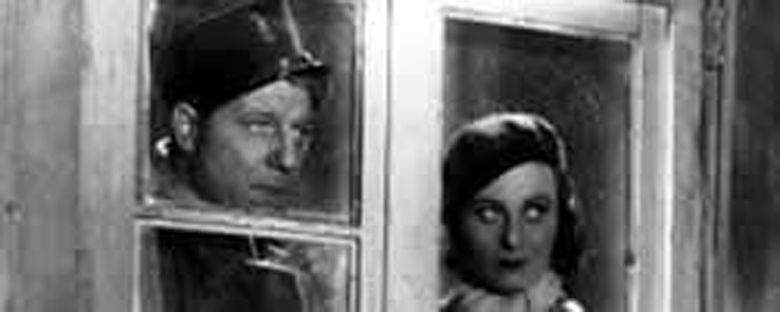Reviews
Le Quai des brumes
Marcel Carné
France, 1938
Credits
Review by Rumsey Taylor
Posted on 02 August 2004
Source The Criterion Collection DVD
Location is generally intrinsic in Noir, and Port of Shadows, in keeping with this trait, is draped in a coastal fog that remains for most of the film. Its locations are always damp, usually dark, and its characters seem unusually hostile because of the climate. In the opening scene, Jean, an émigré, hitchhikes and shortly engages in a dispute with his driver. In haste, the two exit the truck and prepare to scrap in the headlights and realize, suddenly, the incompetence of their conflict. They lower their fists and shake hands.
This dispute is initiated when Jean steals the wheel in order to dodge a dog that runs in front of them. Once he arrives in Le Havre, in Northwest France, the dog has followed him there. Jean is a durable, emotionally indifferent masculine character, and the dog (who will follow him for the rest of the film) draws out a humanity we are to presume Jean rarely exhibits. He is not doomed entirely — that is until he meets Nelly, inherits an affinity for her and is, in turn, made vulnerable.
Jean finds protection in a desolate inn called Panama’s. The name is a reference to the owner’s visit to Latin America; its every mention supplies a contrast to the climate that houses the inn, underlining its patrons’ somber melancholy. Jean is clothed and fed. Nourished and recently befriended, he appears on the verge of a transition after having deserted his fellow soldiers in Indochina, for reasons that are left unmentioned. Jean has yet to finish his first meal at Panama’s before gunshots are heard outside.
Jean should not be so instantly connected to this conflict. Some recognize his compassion and trust beneath his apparent indifference, others instantly distrust him. By interacting with these people he disrupts their ordinary conduct, which some, in targeting him, intend to repair. Many scenes in the film seem dictated by an implicit etiquette — in a later one, Jean rides bumper cars with Nelly. The two share mutual notice with the gangsters, who previously shot at them, in another car. The ride halts, the involved parties exit diplomatically, and the uninvolved resume their activity.
Most everything spoken in Port of Shadows is delivered in an enunciated, lyrical crimespeak, as if the actors are dramatically reading their own character descriptions. When Jean punches one of the gangsters he remarks, “Sorry. I can get violent.” The remaining characters are similarly archetypical. Despite the hospitality — or hope — of any character in the film, as expected, Port of Shadows is a clinical tragedy, and its characters are sentenced to suffer the very instant they enter the film.
We don’t do comments anymore, but you may contact us here or find us on Twitter or Facebook.



